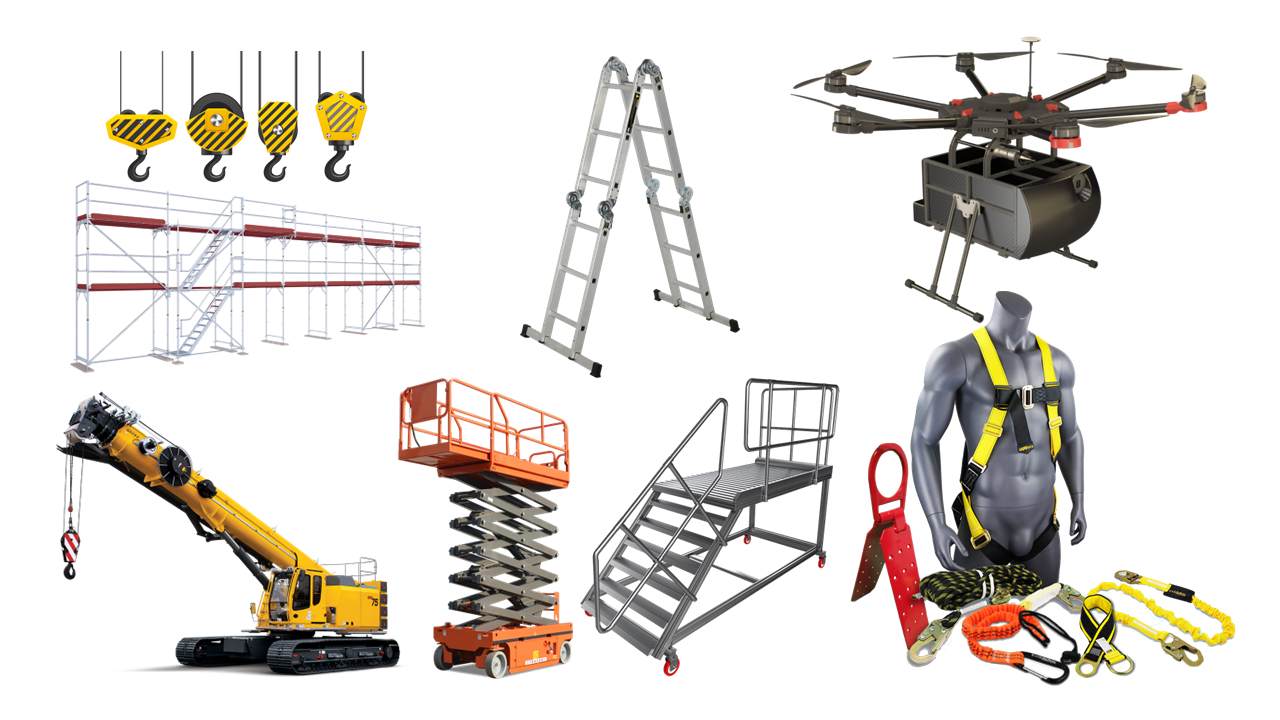SAFETY CONSULTANTS & SOLUTION PROVIDERS are leaders in the protection of life, assets, the environment, and business continuity in Sub-Saharan Africa. Engineering, procurement, construction, installation, commissioning, and maintenance of Fire Safety, Occupational Safety, Environmental Safety, Security, Building Management Systems, Technical Safety, and Process Safety services.
Working at height safety involves the management equipment, personnel, procedures, processes, standards, regulations and other resources that are required for prevention, control, and reduction of hazards and risks associated with working at heights to As-Low-As-Reasonably-Practicable (ALARP).

Working at height is any work above a reference level where the worker risks falling and getting injured, die or face related hazards. It could be work undertaken on an offshore rig, work on communication mast, work on loading lay, works in shipping wharfs, works in open floor area, working from an edge, roof works, works on fragile surfaces, works on lifts, works on elevated platforms, works on mobile cranes, working through a hole, wells, sump, pit, ditches, silos, and tanks; works on towers, working at height from underground, and similar works where a free fall due to gravity could occur and cause a work hazard if the worker is not protected. Any work at a height of two meters (2m) above ground or reference plane should use fall protection measures. OSHA considers a height that is four meters (4m) above ground or reference plane in working at height category.
Working at height hazards include fall, trip, slip. Fall types are – fall of persons from a height and falling of objects from a height.
CAUSES OF WORKING AT HEIGHT HAZARDS
- Poor lighting and dark spaces.
- Worn out shoes or inadequate shoes.
- Inadequate or not using belts, and helmets.
- Faulty flooring materials and construction.
- Objects dropped on working platforms.
- Spilled liquids – water, oil and lubricants.
- No use or inadequate railing, runway, gangway and ramps.
- Non compliance to statutory regulations.
- Working at the wrong speed at height.
- Uncovered opening while – shafts, and manholes.
- Overload persons or equipment.
- Poorly coordinated simultaneous operations (SIMOPs) in the same vertical space.
- Poor visibility due to fog, smoke, fumes, dust, or steam.
- Weak props, planks, ramps, and boards for platforms.
- Poor handling of materials.
- Weakness or poor use of hooks, anchors, ropes, harness, and winches.
CONTROL WORKING AT HEIGHT HAZARDS
- Adequate and dry non-slippery walk surfaces for walking.
- Provision of toe-boards, stoppers, fences, and guard rails.
- Use of proper PPE – shoe, belt, anchor sling, and helmet with strap.
- Use of carabiners, double action hook, grab rope, connector, access rope, and body harness.
- Walking at a safe speed, while working at height.
- Obtain height access work permit before commencing work.
- Prevention of manual and mechanical handling overloads.
- Provision of proper access and egress means while working at height.
- Use of fall arrestor net, cradle crane, cat ladder, and crawling board.
- Provision of adequate scaffolds, stairs, ramps, gangways, runways, and ladders.
- Use of proper lifting equipment – hoists, trolleys, cranes, chinooks, drones, lifting jacks and pulleys.
- Adequate illumination though lighting and openings for direct light.
- Electrically insulated PPE, electrical insulation, and power cutoff in electric lines.
- Caution tapes or safety cordons for restriction in working at height areas.
- Proper notification systems, safety signs, and other hazard identification means.
- Safety assessment and planning of working at height operations, and supervision.
REFERENCE STANDARDS FOR WORKING AT HEIGHT SAFETY
- ISO/TC 274, Light and Lighting.
- ISO 10333: 2000, Personal Fall-Arrest Systems.
- ISO 3873: 1977, Industrial Safety Helmets.
- IS0 20345: 2021, Personal Protective Equipment – Safety Footwear.
- ISO 22846: 2012, Personal Equipment for Protection against Falls – Rope Access Systems.
- ISO 13688: 2013, Protective Clothing – General requirements.
- ISO/CIE 8995-3:2018, Lighting of Work Places – Part 3: Lighting Requirements for Safety and Security of Outdoor Work Places.










